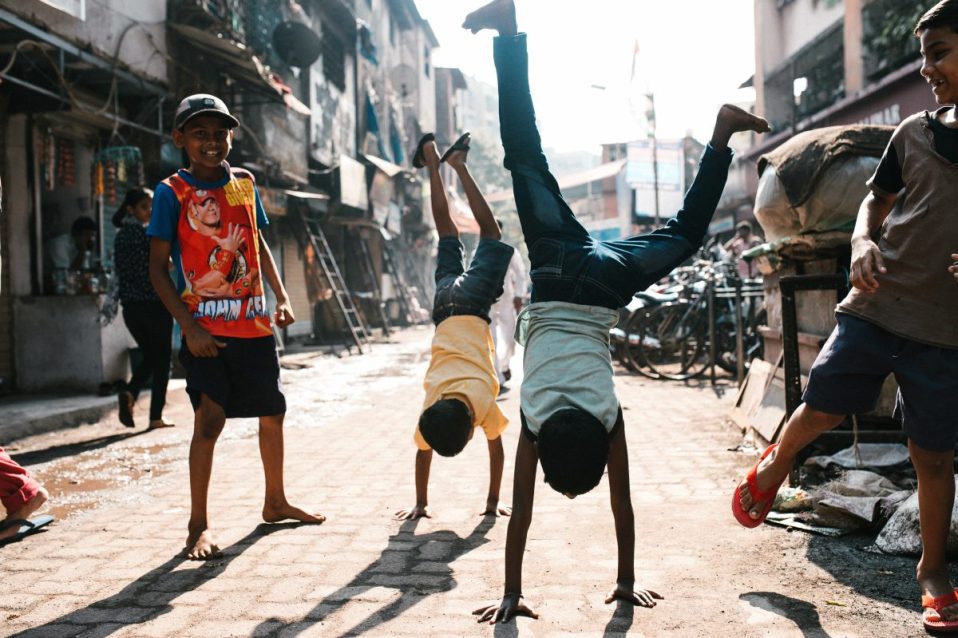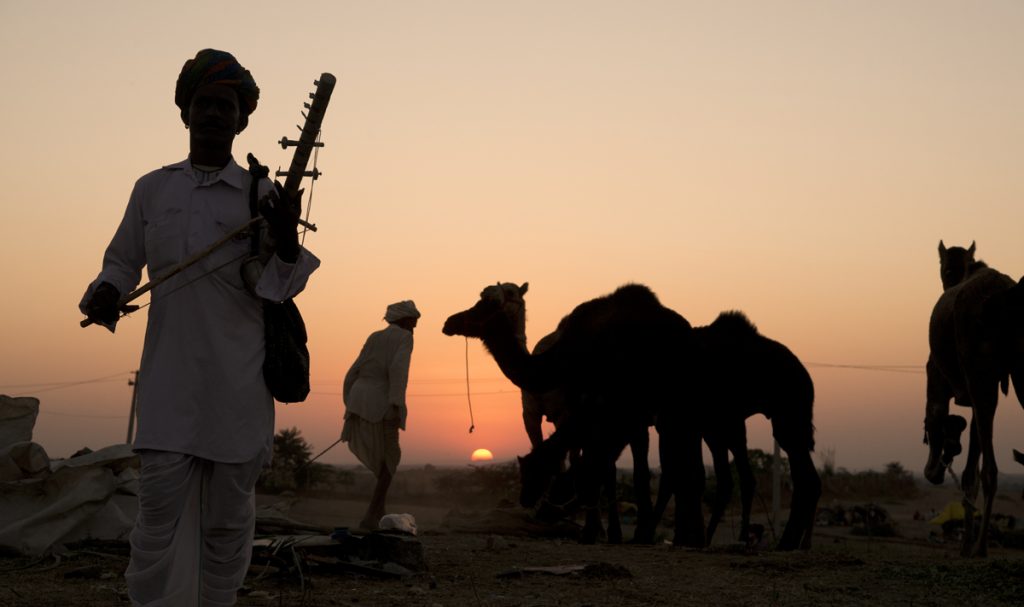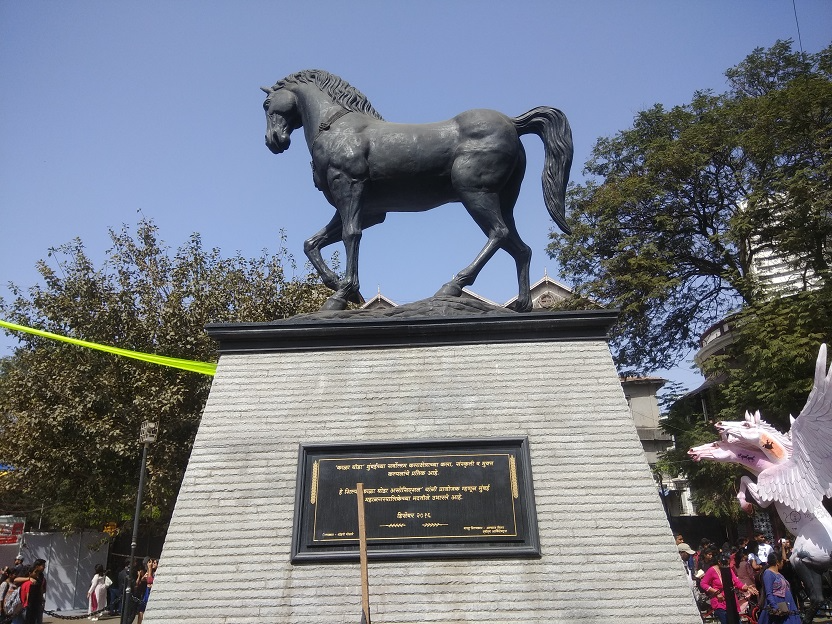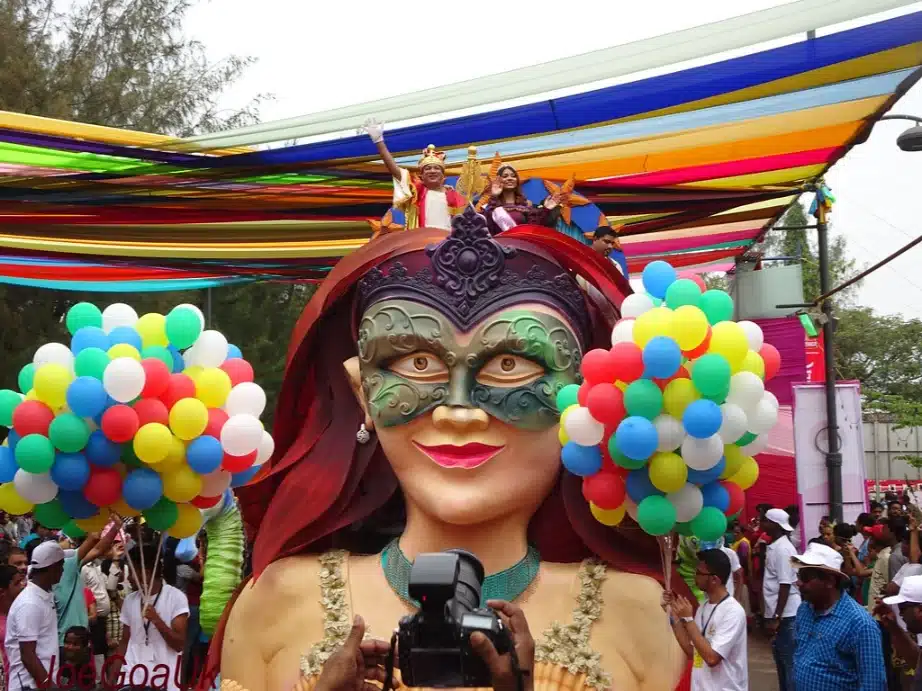When “Gully Boy” flashed across my screen, I anticipated a cinematic journey. Yet, by the time the credits rolled, I found myself covered with a rich tapestry of unfamiliar music from Dharavi slum. The raw beats, electrifying energy, and sheer passion depicted stirred my soul. For someone deeply immersed in global music research, this revelation was both surprising and intriguing. The captivating rhythms of the Dharavi slum, fervent voices, and tales of aspirations, grit, and hope left a lasting impression.
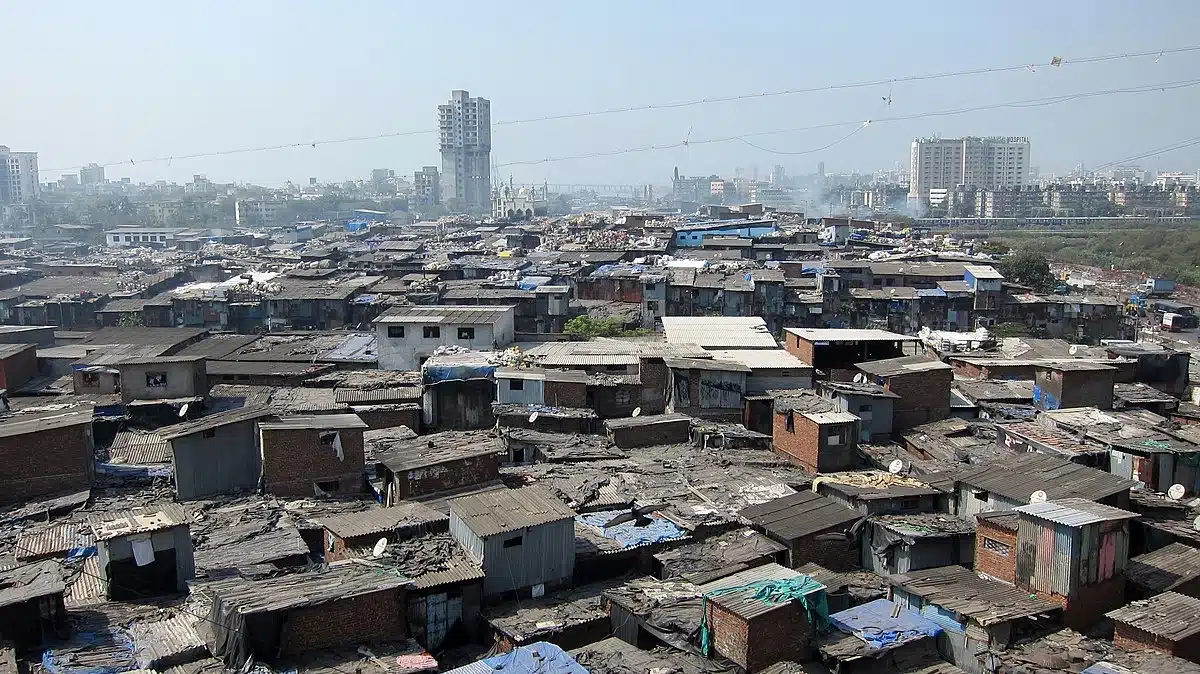
Diving deeper into research, I discovered the heartbeat of this infectious rhythm emanated from the bustling lanes of Dharavi slum. Globally recognized as one of the world’s largest slums, it dawned on me that Dharavi slum was a reservoir of untapped potential and talent. Yet a pressing question remained: Why, with such a wealth of cultural richness and talent, was Dharavi primarily overshadowed by its slum status? Was it societal bias, lack of broader awareness, or a mere oversight? Driven by these haunting beats and thoughts, I resolved to journey from the familiar streets of Chennai to the dynamic metropolis of Mumbai. Not drawn by its towering skyscrapers or Bollywood’s glitter, but by Dharavi slum’s labyrinthine alleys, pulsating with melodies yearning to be discovered. My mission was clear: to illuminate the talents of Dharavi’s musicians, delve into their inspirations, and introduce their profound abilities to a potentially oblivious world. Also, I booked a Savaari to take me on my exploratory journey through Mumbai.
With bubbling anticipation and a hunger for genuine music, I set forth on a voyage to explore the core of Dharavi’s eclectic music culture.
Navigating Mumbai’s beats: A ride into Dharavi’s heart
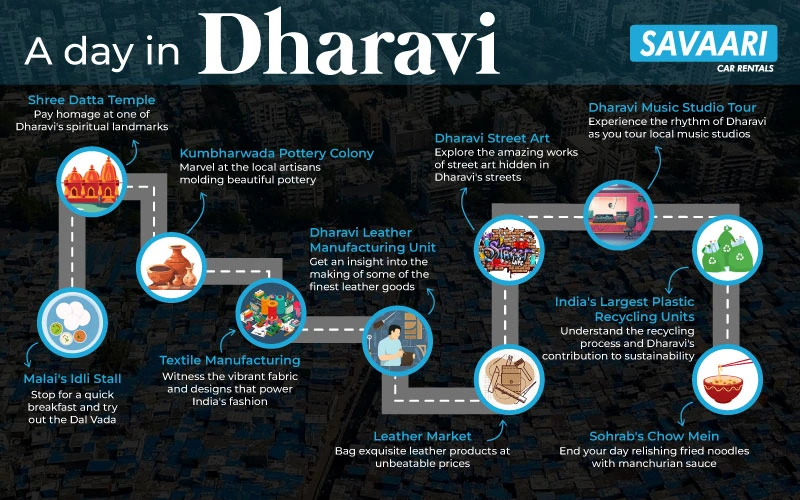
The moment my feet touched Mumbai’s tarmac, the city’s energy was wonderful. The humidity, the chatter, the ceaseless hustle and bustle—it was a sensory overload, but in the best way possible. After collecting my luggage, I went to the hotel and started preparing for my journey. The universe, it seemed, was aligning in my favor when I met Pandu, my cab driver. With a warm smile and an even warmer greeting, he struck up a conversation the moment I settled into the back seat.
“First time in Mumbai?” he asked, glancing at me through the rear-view mirror.
I nodded, explaining my mission: to dive deep into Dharavi slum’s music culture. His eyes lit up with genuine interest. “Ah! Dharavi’s hip hop! My son and I love it!”
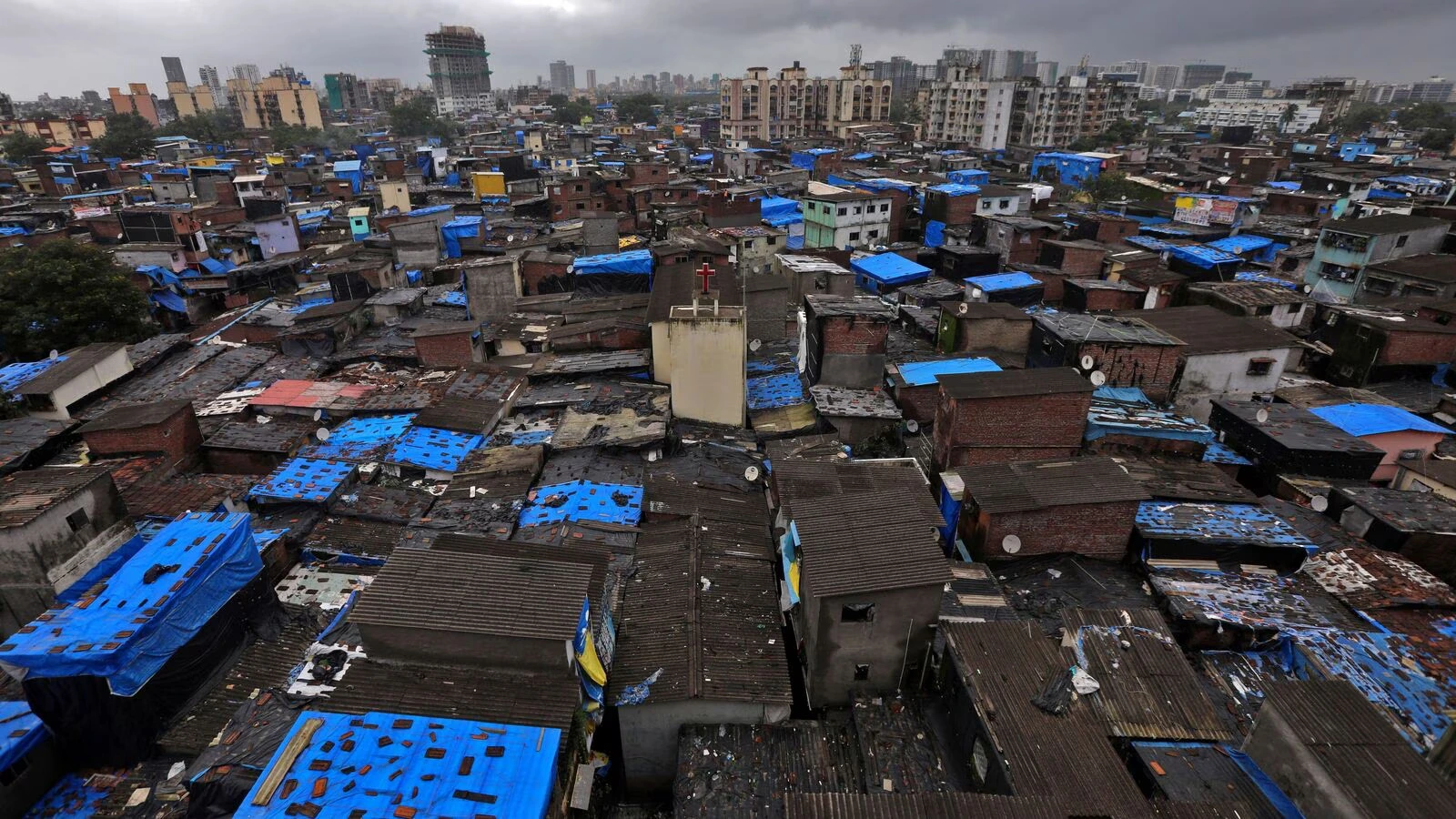
To my surprise, Pandu began to share his own connection to the music scene I was so eager to explore. He spoke of evenings when his home resonated with the rhythmic beats and lyrical flows emanating from his son’s speakers, all influenced by Dharavi slum burgeoning hip hop culture. “It’s more than just music,” he said, his voice filled with emotion. “It’s a voice, a statement, a revolution.
Dharavi’s dawn: The genesis of a Hip-Hop movement
In the bustling lanes of Mumbai, Dharavi stands as a testament to a deep-rooted hip-hop culture. The chronicles of its growth reveal a vibrant tapestry of music, passion, and perseverance.
Over a decade ago, before 2010, hip-hop in India was in its early stages. Its roots weren’t anchored in lavish studios or on grand stages but found life in the digital arenas of platforms like Orkut and Facebook. Here, budding artists, many hailing from areas like Dharavi and Kurla, engaged in ‘cyphers’. These virtual rap battles saw artists exchanging verses, with the online community zealously deciding the victor. These artists, inspired by global icons like Eminem, Sean Paul, and 50 Cent, balanced their aspirations with the daily realities of life in tight-knit communities. Their challenges weren’t limited to artistic expression; they navigated the complexities of living in some of Mumbai’s most densely populated areas.
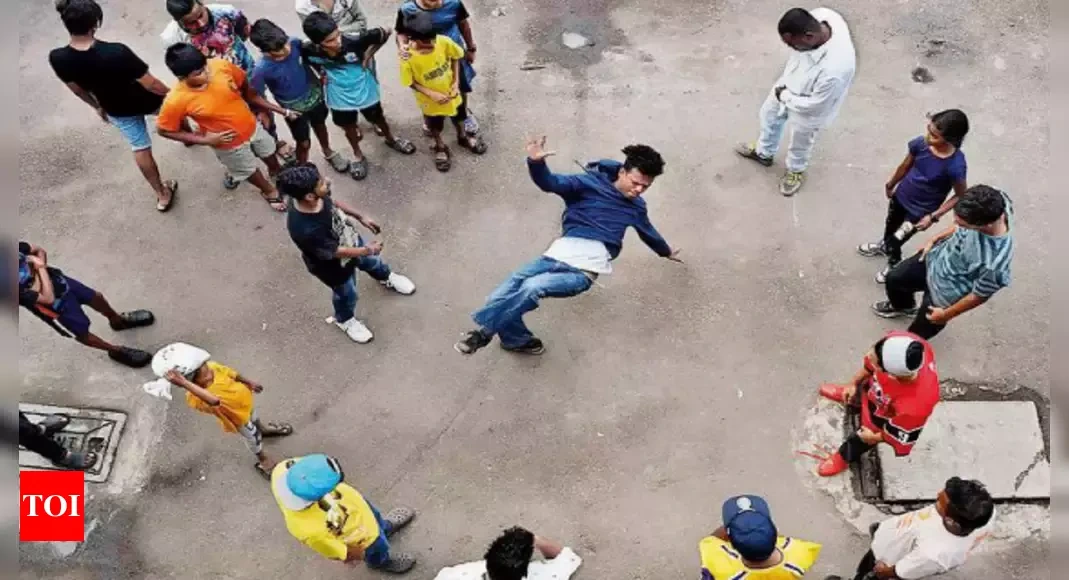
Yet, from these challenges emerged innovation. In a time when producing albums seemed out of reach, platforms like YouTube provided a beacon of hope. One notable success is that of Naezy, who, inspired by the beats of Sean Paul’s ‘Temperature’, released ‘Aafat’—a single that resonated with millions. From Mumbai’s earlier tryst with metal music to its dance with EDM, the city’s musical landscape has continually evolved. But today, hip-hop, especially from Dharavi, reverberates with authenticity. It voices the personal and political concerns of its people. With every rhyme and rhythm, it reflects their daily grind, aspirations, and the unique blend of culture and religion that makes Dharavi so distinctive. The streets here don’t just witness life; they narrate tales of struggle, hope, and dreams through the beats of hip-hop.
Dharavi’s pulse: From rooftop rhythms to national resonance
Navigating through the city’s vibrant backdrop, while on a ride through Mumbai’s intricate web of streets, an unexpected scene captures the heart. A group of enthusiastic kids, no older than 15, are huddled on a terrace, immersed in rhythm and verse. Their passionate display ignites a thought: How did this art form, birthed in the narrow bylanes of Dharavi, achieve such nationwide recognition? What propelled these beats from the shadowed alleys of a local gully to the limelight of the national stage?
Accessibility undoubtedly played its role, but it wasn’t the sole driving force behind the ascent of Dharavi’s rappers. The allure, in significant part, stemmed from the authenticity and relevance of their messages. While many popular tracks in the Indian music landscape depicted opulent lifestyles—shimmering nightclubs, plush cars, and lavish wardrobes—the rappers from Bombay painted a starkly different canvas.
These artists shied away from glam and gloss. They had no tales of extravagant cars or nights drowned in liquor. Their lyrics, instead, mirrored their life experiences. They spoke of daily hustle in a sprawling city, the pitfalls of a flawed system, and an innate hunger to rise above it. Their narratives weren’t fantasies but reflections of their surrounding reality.
Divine, a prominent figure in this landscape, once shared his perspective in an interview, contrasting his music with the thriving Punjabi rap scene. While Delhi’s rap pulse beat to tales of luxury, Bombay’s heart throbbed with authentic stories. “We rapped about our gully, our city. It was genuine, authentic Indian hip-hop,” he remarked, reminiscing about his iconic 2015 track with Naezy, ‘Mere Gully Mein’. The song didn’t just have beats; it had heart. It painted an unfiltered image of life in the gullies, encompassing themes like corruption, familial challenges, systemic inefficiencies, and police excesses. Delivered in the quintessential Bambaiya-tapori style, these tracks not only resonated but became anthems, transcending barriers and establishing a bond with listeners from all walks of life.
Into the heart of Dharavi: An eye-opening exploration
As the car neared its destination, the vast expanse of Dharavi started unfolding before my eyes. I’d done my research, prepped my itinerary, and even engaged the assistance of a local agency to ensure I had a knowledgeable guide. But nothing truly prepares you for the sheer magnitude and complexity of this place. So in that situation my driver was a huge help for me. Because he was a localite and his home was also in Dharavi. He was just like a guide for me.
The labyrinth of lanes seemed endless, each turning into another, weaving an intricate pattern that held within it stories of dreams, resilience, and undying spirit. I could sense the palpable energy in the air – it wasn’t just a place; Dharavi was a living, breathing entity. Stepping out, a feeling of excitement washed over me. The anticipation of discovery, the thrill of delving deep into a world that’s so often misconstrued, was overwhelming. Everywhere I looked, there was life. Children playing, artisans at work, vibrant stalls selling everything from food to fabric. Amidst the hustle, the sound of music was never far, a testament to the thriving culture that had brought me here.
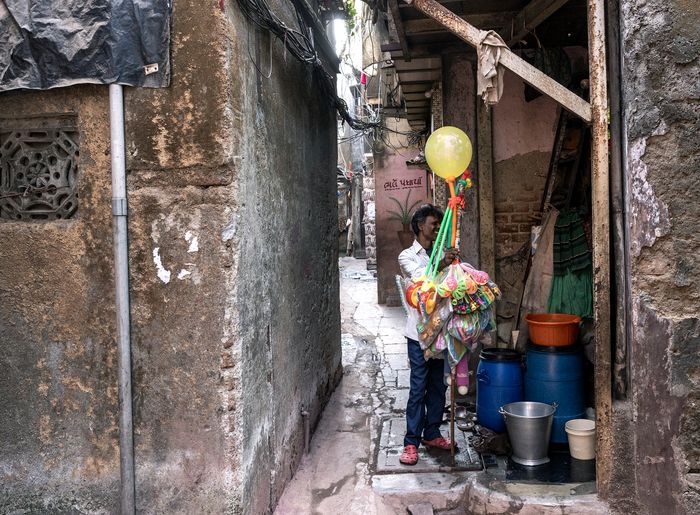
Walking further, a signboard caught my attention, boldly proclaiming: ‘Dharavi Dream Project’. I paused, a mix of recognition and curiosity flashing across my face. Before I could voice my thoughts, my guide stepped in, ready to unravel yet another layer of Dharavi’s fascinating tapestry. And as he began, I braced myself for yet another chapter of this enchanting journey.
Dharavi’s beacon: The Dharavi Dream Project
The Dharavi Dream Project (DDP) isn’t just a name or an initiative; it’s a beacon of hope for countless young souls seeking an outlet for their creativity and passion. Nestled amidst the dense labyrinth of Dharavi’s bustling lanes, the project stands as a testament to the unyielding spirit of the community and its aspiration to rise above societal constraints.
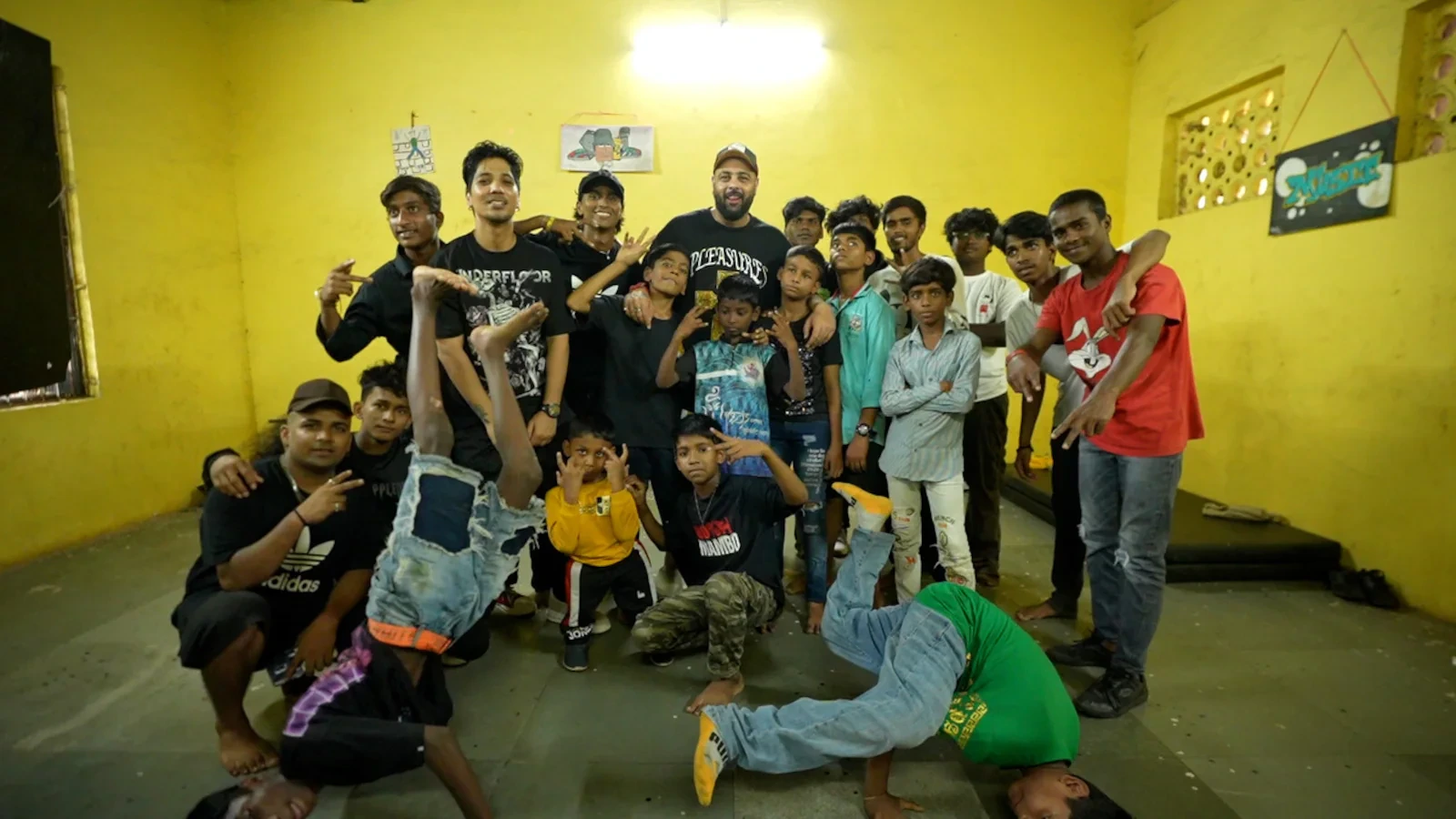
The primary aim of DDP is to harness the raw talent of Dharavi’s youth and offer them a platform to channelize their energy productively. While Dharavi is a melting pot of diverse talents, the project primarily zeroes in on the arts – music, dance, and street art. Here, the rhythmic beats of the tabla meld seamlessly with the pulse of hip-hop, and walls become canvases, telling tales of ambition, dreams, and resilience. One of the most commendable aspects of DDP is its focus on nurturing not just talent but the individual. Through comprehensive workshops, mentorship programs, and collaborative sessions, participants are equipped with not only the skills but also the confidence and self-worth needed to break free from societal shackles. In a place where opportunities can often seem limited, DDP stands out as a beacon, signaling a path to a brighter, more fulfilling future.
Beyond the arts, DDP is also deeply rooted in social activism. Through its various initiatives, it seeks to bring about a positive change in societal perceptions about Dharavi and its residents. By showcasing the immense talent and potential that resides within its narrow lanes, the project aims to challenge and change the often-misconceived narratives surrounding this dynamic community. As my guide passionately described the ethos and endeavors of the Dharavi Dream Project, it was evident that it wasn’t merely an initiative. It was a movement. A movement that sought to redefine Dharavi not as a ‘slum’ but as a powerhouse of talent, ambition, and dreams waiting to be realized.
From Dharavi’s depths: Rap, rhythm, and reality
Navigating further through Dharavi’s network of lanes, the beat of a familiar rhythm pulled us closer. There, in a small enclave, we stumbled upon a group of young rappers, deeply engrossed in their craft. Spotting some familiar faces, my guide quickly introduced us.Their expressions shifted from mild curiosity to genuine warmth when I revealed my passion for music. It was refreshing for them; someone genuinely interested in their talent, rather than the novelty of their origin.
When they found out about my genuine love for music, a bridge of mutual respect formed. Their tales were entwined with their craft. While some pursued college degrees, others toiled in shops or were part of the bustling local industries. Each day was a balance of responsibilities and their unyielding passion for rap. Amidst the grind, inspiration struck at the oddest times, leading them to jot down their musings in notebooks that were never far from reach.
Seeing my genuine interest, one of them cleared his throat, nodding to his companions, and began. His verses, raw and authentic, painted vivid tales of their life in Dharavi. Every line, every word resonated deeply, echoing the dreams, struggles, and aspirations of their community. The others soon joined, harmonizing their voices, turning the narrow lane into a stage of its own. Their performance was more than just music; it was a testament to their life and their unyielding spirit.
As the last line echoed, I asked, “What do you all ultimately hope to achieve with your music?”
A soft-spoken member of the group responded, “We don’t want sympathy or to be labeled as ‘Dharavi’s musicians.’ We just want the world to hear our songs and think, ‘These guys are good’ – because of our talent, not our address.” Reflecting on their sentiments, a realization dawned. They weren’t seeking sympathy or the label of ‘Dharavi’s musicians’. Their genuine talent deserved universal acknowledgment. That insight was eye-opening; the world ought to recognize them as talented musicians, not merely products of their environment.
A culinary pause in Dharavi’s lanes
Wandering through Dharavi slum’s vast maze, my stomach gave a timely grumble, signaling a break. Noticing my hunger, the guide suggested a popular local eatery. The streets of Dharavi slum , while echoing with the sound of budding rappers, also tantalized with the aroma of delectable dishes. Just two bites in, and I could taste the essence of Dharavi slum – a mix of traditional flavors, with a hint of cosmopolitan influence. I suddenly remembered one of my friends, who just traveled all the way from Chennai to Munbai, just to eat ‘Vada Pav, after reading this amazing article about the best vada pavs in Mumbai.
More than a recipe – Tales from Dharavi’s kitchen
While enjoying our meal, the guide introduced me to an intriguing culinary narrative – “The Indecisive Chicken (Hichkichanevali Murgi): Stories and Recipes from Eight Dharavi Cooks”. This bilingual cookbook, penned by Prajna Desai, offers a rich insight into Dharavi slum culinary culture through eight unique recipes and their accompanying tales. With its cover portraying an onion in transformation, the book beautifully symbolizes the profound power of cooking to narrate stories.
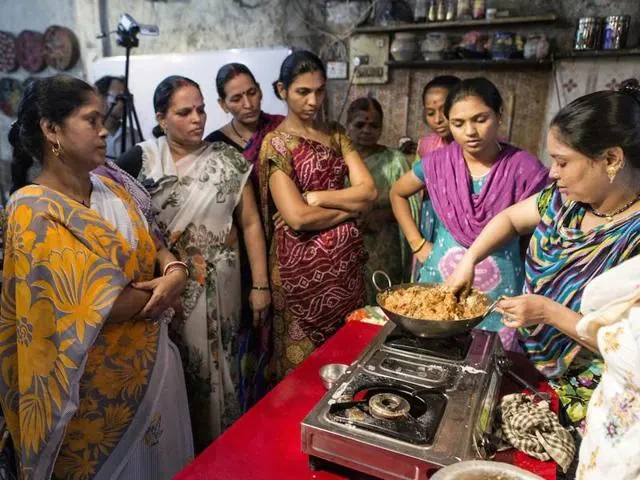
This innovative endeavor was inspired by the Dharavi Biennale, a platform by the NGO, Society for Nutrition, Education, and Health Action (SNEHA). It aimed to foster diverse community interactions. Desai, blending her background in art history, sought to chronicle Dharavi’s everyday life, focusing predominantly on its women, via the universal language of food. Initial hesitancy from the women, doubting the importance of their routine culinary skills, gradually gave way to passionate dialogues about food preferences, eventually crafting the heart of the book. Among India’s vast array of cookbooks, very few spotlight the daily culinary art of the working class. However, Desai’s work proudly presents these often overlooked dishes, intertwined with heartfelt anecdotes from their creators. Recipes like the aromatic fish curry enriched with roasted onions, or the roselle-flavored pulao, reveal the culinary diversity and ingenuity ingrained in Indian food traditions. It’s a testament to the culinary brilliance of everyday individuals, which unfortunately remains in the shadows, eclipsed by commercialized culinary outlets.
In her journey through Dharavi’s gastronomic terrain, Desai ponders over the distinction between viewing cooking as mere craft or elevating it to an art form. More importantly, she emphasizes the value of cherishing and documenting these daily culinary wonders. Do you feel like having authentic Dharavi slum cuisines, just book a Savaari now, and go enjoy the flavors of Dharavi.
Echoes from Dharavi’s past: Ramprasad’s melody
After our delightful meal, we resumed our exploration of Dharavi. The sun was inching towards the horizon, casting golden hues on the narrow alleys. Among the cacophony of children playing and vendors hawking, a soulful hum resonated. It was an elderly gentleman, his wrinkles deep with stories, humming an old Hindi melody.
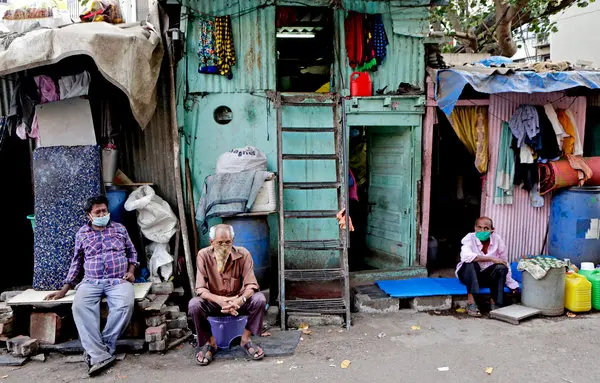
Dharavi, to me,is not just walls and narrow alleys, but a heartbeat I’ve danced to since my youth. It saddens me when outsiders see only our struggles. Yes, we faced hardships, but our spirits, like my old Hindi songs, never waned. Now, listening to the young voices, weaving their dreams through hip hop, I feel a profound sense of pride. Their lyrics are not just words; they’re echoes of our past, reflections of our present, and dreams for a brighter tomorrow. My hope? That the world sees them for the raw, unfiltered talent they possess, not just as musicians from Dharavi, but as beautiful souls crafting music that resonates universally.
– Ramprasad
Stitched in slums: Dharavi’s high-end leather legends
Walking past a leather manufacturing unit, my guide turned to me with a mischievous glint, “Want a designer bag at a third of its price?” Confused, I gave him a quizzical look. That’s when he unveiled Dharavi’s best-kept secret: its world-renowned leather industry.
Dharavi, a Mumbai slum, has been a leather powerhouse since the ’50s. Amidst its narrow lanes, skilled artisans have transformed leatherwork from a traditional skill into a thriving global business. Today, the slum boasts thousands of units producing everything from shoes to wallets, with several high-end fashion brands sourcing leather jackets for their unmatched quality and workmanship. The leather journey in Dharavi begins with tanned leather sourced from government plants. This leather is then dyed multiple times, using both natural and synthetic dyes, achieving distinct hues. Once dyed, it undergoes finishing—being polished, buffed, and treated—to enhance its appearance and durability.
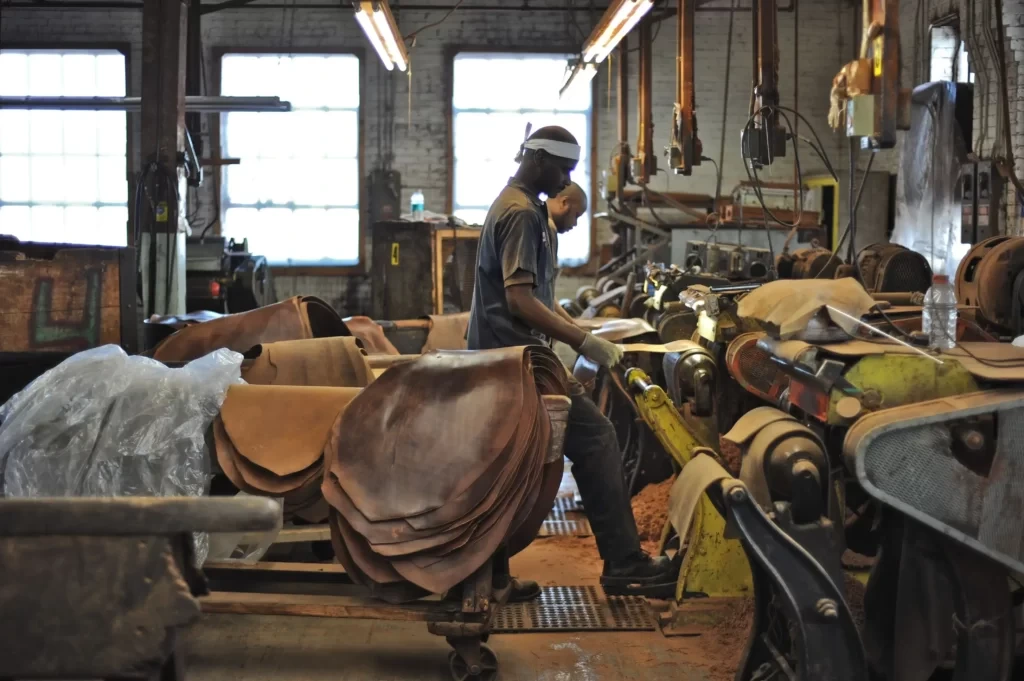
Even with modern tools, the artisans of Dharavi hold onto their traditional techniques. Hand-stitching creates intricate designs, reflecting individual craftsmanship. These techniques, blending old with new, result in unique pieces, making Dharavi the go-to place for premium leather goods. This flourishing industry showcases the resilience and entrepreneurial spirit of Dharavi’s artisans. They’ve organized themselves into collaborative clusters, sharing resources and ideas. Embracing both modern equipment and time-honored techniques, they’ve forged an industry that stands tall, a testament to their tenacity and innovation.
Beyond just business, leatherwork in Dharavi is a cherished art, passed down through generations. Its products? Not just accessories, but symbols of a community’s enduring spirit. And yes, in Dharavi, you can indeed find that coveted ‘first copy’ of designer bags, a reflection of the craft that thrives in its heart.
Places to visit near Dharavi
After visiting the leather factory, I turned to my guide with a question I had been mulling over. “After Dharavi, are there other iconic spots nearby that visitors can experience?” My guide, ever ready with answers, began listing some of Mumbai’s jewels, each distinct in its essence:
Maharashtra nature park
Once a dumping ground, this park is now a serene green oasis spanning 37 acres. A testament to nature’s resilience, it showcases the rich flora and fauna of Maharashtra.
Shree Siddhivinayak temple
Revered by millions, this iconic temple, with its intricate architecture, is dedicated to Lord Ganesha. It’s not just a place of worship but also a landmark symbolizing Mumbai’s undying faith.
Basilica of Our Lady of the Mount
Perched atop Bandra’s hill, this Roman Catholic Basilica is more commonly referred to as the Mount Mary Church. The panoramic views of the Arabian Sea coupled with its neo-gothic architecture make it a must-visit. You can easily book a cab to enjoy the phenomenal beauty of Mumbai, just by booking a Savaari
Gateway of India Mumbai
Overlooking the Arabian Sea, this monument stands as a grand reminder of Mumbai’s colonial history. It was erected to commemorate the landing of King George V and Queen Mary, marking their first visit to India.
Chhatrapati Shivaji Maharaj terminus (CSMT)
Formerly known as Victoria Terminus, this historic railway station is a UNESCO World Heritage site. Its intricate Gothic architecture is a mesmerizing blend of influences from Indian traditional Mughal styles and Victorian Italianate Gothic Revival architecture.
Journey’s end, memories begin: From Dharavi to home
The sun dipped lower, signaling the end of a day that had reshaped my understanding of Dharavi. Beyond its reputation as one of Asia’s largest slums, I saw a place bursting with life, innovation, and immense talent. The rhythm of the streets, the dedication of its young artists, and the wise words of its elders revealed a community that thrived on resilience and passion.
I had entered Dharavi curious about its burgeoning music scene but left with so much more. It was a reminder that true art emerges from the heart, undeterred by circumstance. Each melody, each verse I heard was a testament to the dreams that refuse to be confined by concrete walls or societal perceptions. Boarding my flight from Mumbai to Chennai, the city’s lights twinkled beneath. But it was the echoing beats of Dharavi’s heart that I carried with me, a melody that would remain long after the journey’s end.
Hours later, as my Savaari airport cab wove through Chennai’s streets, the familiar sights and sounds of home surrounded me. Yet, my mind was miles away, still wandering the vibrant alleys of Dharavi. Each honk, each distant tune from a radio brought fleeting moments from my Dharavi visit rushing back. The determination in the eyes of young rappers, the wisdom of the elders, and the rich tapestry of culture and talent that intertwined in its streets left an indelible mark on my soul. By the time I reached my doorstep, I realized that while I had left Dharavi behind, its essence would forever remain a part of me, influencing my outlook and reminding me of the resilience of the human spirit.
Useful travel information
Last Updated on December 14, 2023 by Arathy Subhash Marath
